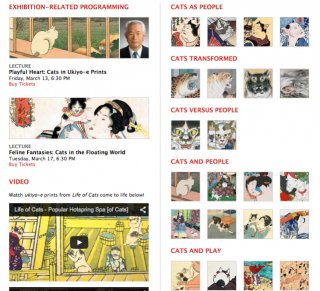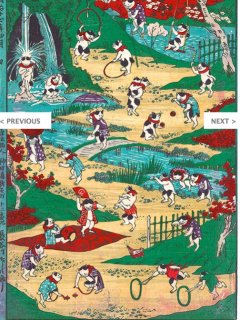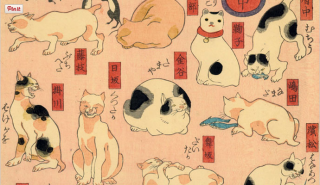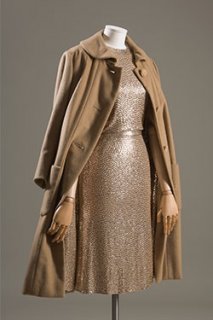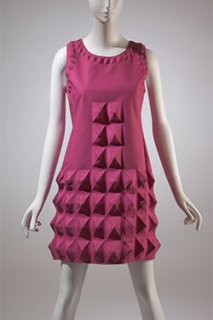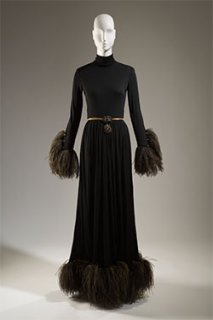L'art n'est-il qu'un produit de luxe?
20 OCTOBRE 2014 | PAR LES INVITÉS DE MEDIAPART
La Fondation Louis-Vuitton, un nouveau musée d'art contemporain créé par Bernard Arnault dans le Bois de Boulogne, est inaugurée ce lundi 20 octobre par François Hollande. Des écrivains, des philosophes, des artistes critiquent le rôle croissant des grands groupes financiers dans l'art contemporain et dénoncent les « nobles mécènes » qui « ne sont en vérité que des spéculateurs ».
Le rôle toujours croissant, dans l’art contemporain, des grands groupes financiers liés à l’industrie du luxe y suscite encore moins de débats que celui des tyrannies pétrolières. Les intellectuels, critiques et artistes qui œuvrent ici, pourtant traditionnellement enclins aux postures « radicales » et aux discours contestataires, semblent aujourd’hui tétanisés par la peur d’une fuite des capitaux, comme si la plus petite réserve émise les exposait à des représailles qui les frapperaient au portefeuille. Dans ce milieu pourtant bavard, et qui sut être quelquefois frondeur, une véritable omertà règne dès qu’il s’agit de financement. Lorsqu'on émet des doutes sur le désintéressement de tel ou tel patron (au sens de « mécène »), on se voit répondre en général que nul n’est dupe, mais qu’il n’y a pas d’alternative – c’est la fameuse TINA (There Is No Alternative). Le désengagement des États, appauvris par une crise où les mêmes grands financiers ont joué un rôle majeur, condamnerait en effet le monde de l’art et de la culture à mendier chez les très riches.
Nous ne nous posons pas en modèles de vertu. Qui n'a, dans ce milieu, participé un jour ou l'autre aux manifestations d'une fondation privée ? Mais quand les plus grosses fortunes de France rivalisent pour intervenir massivement dans la production artistique, les arguments classiques en faveur de ce type de financement nous paraissent faibles et hypocrites.
On insiste toujours, lors des manifestations artistiques ainsi « sponsorisées », sur l’étanchéité de la séparation entre l’activité commerciale du « sponsor » et l’activité culturelle de la fondation qui porte son nom. De fait, il fut un temps où de grands mécènes aidaient les arts sans se mettre en avant. Ils se contentaient d’une mention en corps 8 au bas d’une troisième page de couverture, d’une plaque émaillée au coin d’un édifice, d’un mot de remerciement en préambule. Mais notre époque est aux annonces fracassantes, aux fêtes pharaoniques et aux publicités géantes. On ne donne plus carte blanche à un artiste en demeurant dans l’ombre : on lui commande la décoration d’une boutique sur les Champs-Élysées ou la mise en scène de l’inauguration d’une succursale à Tokyo. Le magasin de sacs n’est séparé de la galerie que par une mince cloison, et des œuvres viennent se mêler aux accessoires, eux-mêmes présentés sur des socles et pourvus d’un cartouche. Les boutiques de luxe, désormais, se veulent le prototype d’un monde où la marchandise serait de l’art parce que l’art est marchandise, un monde où tout serait art parce que tout est marchandise. Il est vrai que les nouveaux maîtres du marché de l’art ont su, en leur faisant des passerelles d’or, débaucher les experts et les commissaires les plus réputés, contribuant ainsi à l’appauvrissement intellectuel de nos institutions publiques. Mais ce n’est aucunement pour leur donner les moyens de servir une idée de l’art en tant que tel, car le patron ne cesse d’intervenir dans des transactions qui l’intéressent au plus au point.
Pas plus qu’il n’y a d’étanchéité entre les affaires et les choses de l’art, il n’y a, en effet, d’innocence ou de désintéressement dans les aides que ces gens dispensent. Leurs employés ont bien soin de rappeler que le mécénat est une ancienne et noble tradition. Sans remonter au Romain Mécène – délicat ami des poètes – ils citent Laurent de Médicis, Jacques Doucet ou Peggy Guggenheim, dont messieurs Pinault et Arnault seraient les dignes successeurs. Quand bien même ils seraient ces gentils amateurs éclairés que nous dépeignent les pages Culture des journaux – et non les affairistes que nous révèlent leurs pages Économie –, les faits comptables parlent d’eux-mêmes.
L’essence du véritable mécénat est dans le don, la dépense sèche ou, pour parler comme Georges Bataille, « improductive ». Les vrais mécènes perdent de l’argent, et c’est par là seulement qu’ils méritent une reconnaissance collective. Or, ni monsieur Pinault ni monsieur Arnault ne perdent un centime dans les arts. Non seulement ils y défiscalisent une partie des bénéfices qui ne se trouvent pas déjà dans quelque paradis fiscal, mais ils acquièrent eux-mêmes, pour plus de profit, des salles de ventes, et ils siphonnent l’argent public (comme avec la récente exposition si bien nommée À double tour de la Conciergerie) pour des manifestations qui ne visent qu’à faire monter la cote de la poignée d’artistes sur lesquels ils ont provisoirement misé. Ils faussent le marché en s’appropriant tous les maillons de sa chaîne, en cherchant à faire et défaire des gloires. En un mot, ils spéculent, avec la collaboration active des grandes institutions publiques, qui échangent faveurs contre trésorerie. Déjà premières fortunes de France, ils s’enrichissent ainsi, encore et toujours plus, au moyen de l’art. Ceux qui se présentent à nous comme de nobles mécènes ne sont en vérité que des spéculateurs. Qui ne le sait ? Mais qui le dit ?
Un argument plus faible encore en faveur de ce mode de financement pour l’art en appelle au respect de l’esprit d’entreprise et à l’égard dû aux intérêts industriels de la France. Ne doit-on pas reconnaissance à ces fleurons du CAC 40 pour l’aide qu’ils apportent à la création ? Il suffit pourtant d’un coup d’œil sur l’histoire de groupes financiers comme ceux des frères ennemis Kering-Pinault et LVMH-Arnault pour comprendre qu’il ne s’agit plus, et depuis longtemps, de groupes industriels. Leur politique est clairement, strictement, financière, et la seule logique du profit détermine pour eux abandons et acquisitions d’entreprises. Viennent de l’apprendre à leurs dépens plus de mille femmes licenciées après avoir consacré leur vie professionnelle à La Redoute. La grande entreprise d’aujourd’hui a perdu l’usine dans le flux tendu ; elle a égaré sa production industrielle dans la jungle asiatique. Sa politique du tiroir-caisse et de l’évasion fiscale n’a plus rien à faire des intérêts nationaux, comme le prouve le récent coup d’éclat de monsieur Arnault en Belgique. Il s’agit de la politique même – obsédée par les dividendes et le profit à court terme – qui a provoqué la plus grave crise économique de ces cinquante dernières années, a mis à genoux des nations entières et a jeté dans la misère et le désespoir des millions de nos voisins européens.
Mais qu’importe l’immoralité du capitalisme incarné par ces nouveaux princes, nous dit-on : les manifestations artistiques ne sont d’aucune conséquence pour eux, qui agissent à une autre échelle. Cet argument cynique se heurte à l’évidence de l’orchestration médiatique. Car la nouvelle culture entrepreneuriale croit en l’« événementiel » comme en un nouveau Dieu. La finance et la communication ont remplacé l’outil industriel et la force de vente. Or l’art, bon ou mauvais, produit de l’événement, souvent pour son malheur et quelquefois malgré lui. Il fluctue comme l’argent, et son mouvement même peut devenir valeur boursière. Pour une société qui se rêve rapide, indexée sur les flux, il a le profil même de l’objet du désir. Il offre donc aux nouveaux consortiums financiers une vitrine idéale. Il peut être brandi par eux comme leur projet existentiel. Et pour que cette symbiose néolibérale soit viable, il suffit que l’art s’y laisse absorber, que les artistes renoncent à toute autonomie. Rien d’étonnant, alors, à ce que l’académisme d’aujourd’hui soit designé : chic et lisse, choc et photogénique, il est facilement emballé dans le white cube du musée, facilement déballé dans le cul de basse fosse des châteaux de cartes financiers. Les musées privés de nos milliardaires sont les palais industriels d’aujourd’hui.
Pouvons-nous encore croire que l’appropriation de notre travail et la caution de notre présence ne sont qu’un élément négligeable de leur stratégie ? Il en est, parmi nous, qui se disent non seulement de gauche, mais marxistes, voire révolutionnaires. Peuvent-ils se satisfaire d’une telle dérobade ? La puissance écrasante de l'ennemi en fait-elle un ami ? En ces temps de chômage de masse, de paupérisation des professions intellectuelles, de démantèlement des systèmes de protection sociale et de lâcheté gouvernementale, n’avons-nous pas mieux à faire, artistes, écrivains, philosophes, curateurs et critiques, que de dorer le blason de l’un de ces Léviathan financiers, que de contribuer, si peu que ce soit, à son image de marque ? Il nous semble urgent, en tout cas – à l’heure où une fondation richissime a droit, pour son ouverture, à une célébration par le Centre Beaubourg de son architecte star (Frank Gehry) – d’exiger des institutions publiques qu’elles cessent de servir les intérêts de grands groupes privés en se calant sur leurs choix artistiques. Nous n'avons pas de leçon de morale à donner. Nous voulons seulement ouvrir un débat qui se fait attendre, et dire pourquoi nous ne voyons pas matière à réjouissance dans l'inauguration de la Fondation Louis-Vuitton pour l'art contemporain.
Pierre Alferi, écrivain
Giorgio Agamben, philosophe
Madeleine Aktypi, écrivain
Jean-Christophe Bailly, écrivain
Jérôme Bel, chorégraphe
Christian Bernard, directeur du Musée d'art moderne et contemporain (Mamco) de Genève
Robert Cahen, artiste
Fanny de Chaillé, chorégraphe
Jean-Paul Curnier, philosophe
Pauline Curnier-Jardin, artiste
Sylvain Courtoux, écrivain
François Cusset, écrivain
Frédéric Danos, artiste
Georges Didi-Huberman, historien d’art
Suzanne Doppelt, écrivain
Stéphanie Éligert, écrivain
Dominique Figarella, artiste
Alexander García Düttmann, philosophe
Christophe Hanna, écrivain
Lina Hentgen, artiste
Gaëlle Hippolyte, artiste
Manuel Joseph, écrivain
Jacques Julien, artiste
Suzanne Lafont, artiste
Xavier LeRoy, chorégraphe
Philippe Mangeot, membre de la rédaction de Vacarme
Christian Milovanoff, artiste
Marie José Mondzain, philosophe
Jean-Luc Nancy, philosophe
Catherine Perret, philosophe
Olivier Peyricot, designer
Paul Pouvreau, artiste
Paul Sztulman, critique
Antoine Thirion, critique
Jean-Luc Verna, artiste
Christophe Wavelet, critique














 and let me tell you he counts amongst his friends some of the richest collectors in the world ... B)
and let me tell you he counts amongst his friends some of the richest collectors in the world ... B) 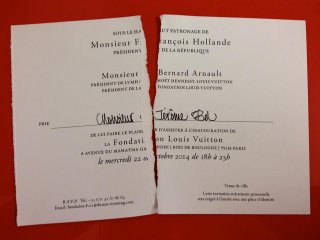


 ...
... ...
... ...
...